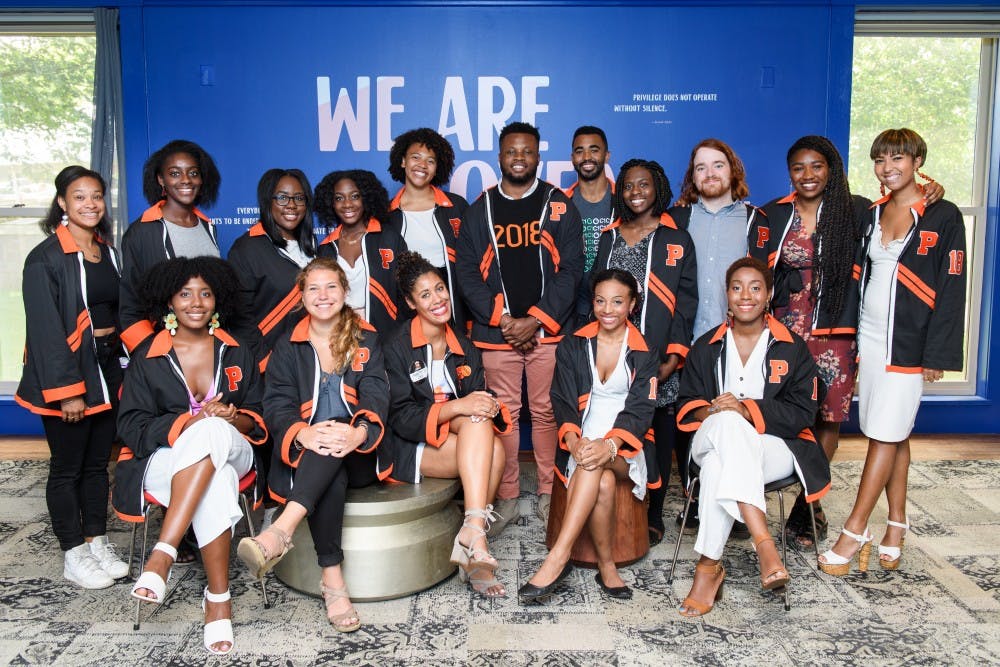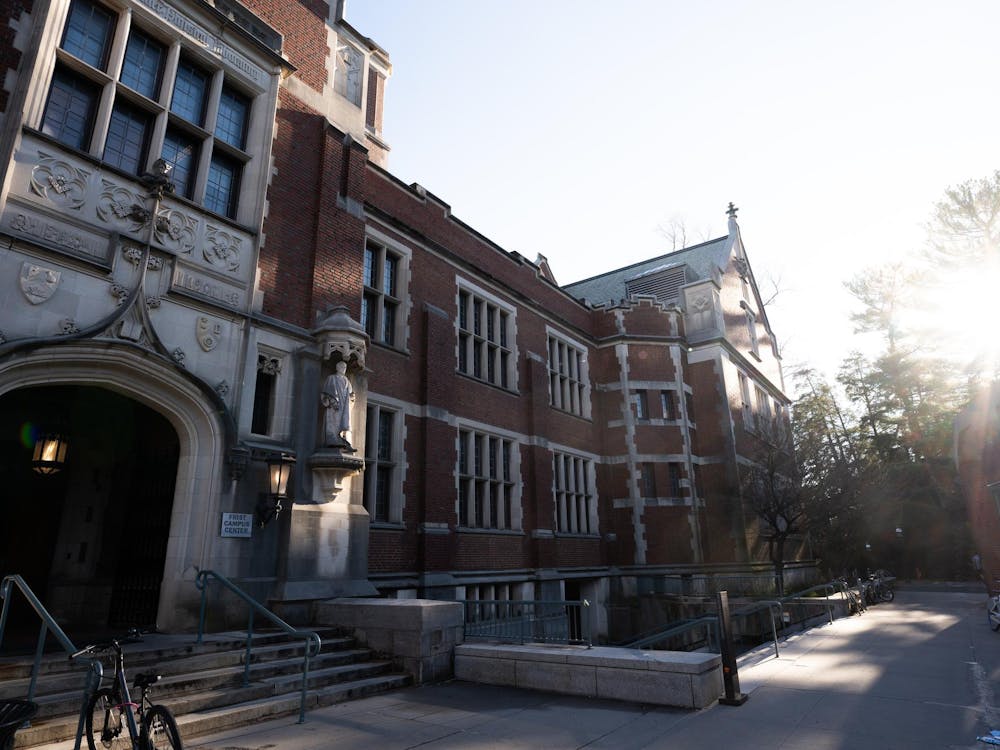With its first cohort of concentrators freshly graduated in June 2018, the Department of African American Studies (AAS) is looking to continue its work in education and research that engages the political, economic, and cultural aspects of the African-American tradition today.
“Last year, graduating ten students was a phenomenal experience. It was a historic moment for Princeton,” said professor and department chair Eddie S. Glaude Jr. “What we have to do is consolidate our gains and clearly map a future. How we can continue to grow our major, continue to expand our footprint on Princeton’s campus as a department. That’s where a lot of our energy is directed now.”
The AAS program and certificate were first founded in 1969 in response to calls for greater representation of people of African descent and their intellectual traditions at the University, according to the AAS website. It began with a teaching staff of only seven, most of whom were visiting lecturers or non-tenure-track faculty brought in from other departments.
The program grew and developed into the Center for African American Studies, which was established in 2006 with professor Valerie Smith as its first director. Glaude became chair in 2009.
In fall 2015, African American Studies was approved as an academic department, allowing students the option to pursue an AAS concentration or certificate.
For Glaude and others, it was essential to make the AAS concentration an option and allow a new generation of students could pursue this path. Before, the University lagged behind rival institutions in its lack of an AAS concentration.
“I can say with a smile that we have built a department that they can choose to join. That it can be here for them,” Glaude said.
In the past seven years, the department has hired a large number of faculty, growing rapidly to its current six fully-appointed and eight jointly-appointed faculty members. The new hires shaped the team, adding their own unique insights, backgrounds, and visions.
“We have grown so quickly from the time we moved from a program to a center, center to a department,” Glaude said. “We’re a dynamic faculty, excited about ideas and excited about being in the classroom.”
Currently, the AAS department is focused on expanding its academic offerings, developing its curricula and opening courses to a broader swath of the University community. Upcoming classes will continue to cut across traditional disciplines, attracting students in many departments, according to Glaude.
AAS 201, formerly Introduction to the Study of African American Cultural Practices, will be “retooled” next semester as African American Studies and the Philosophy of Race, offered as an Epistemology and Cognition distribution requirement. Department faculty are also working on the “granular” deliverables of making sure students are prepared for independent work and senior theses.
Joshua Guild, Associate Professor of History and African American Studies, hopes that courses like AAS 235: Race is Socially Constructed: Now What?, taught by associate professor Ruha Benjamin, and his own AAS 367: African American History Since Emancipation, can draw in students who might not otherwise take classes in the department.

“We’re hoping that courses like [these] are places where students from a variety of different fields and different interests can come and get a sense of what the field of African American studies is and how it’s connected to both their own intellectual interests and also what is going on in the world right now,” Guild said.
Events and other programming are also essential to the department’s mission to make AAS accessible across campus. Lectures, panels, and conversations, such as the upcoming “Race & the NFL: A Conversation with Michael Bennett” connect course content with current events.
Since the department is new and has few alumni, Glaude says, another effort is compelling last year’s graduates to share their stories and successes. Many of them have gone on to prominent graduate schools and fulfilling careers.
“We continue to watch what they do in the world. They become billboards for the department,” Glaude said.
The idea is to showcase AAS as a concentration with practical value for future students.
There are three concentrators set to graduate in the Class of 2019 and 11 currently declared in the Class of 2020.
AAS concentrators can choose to focus on one of three subfields: African American Culture and Life, Global Race and Ethnicity, and Race and Public Policy. The interdisciplinary nature of AAS allows concentrators to combine their interests in African-American history and culture with interests in technology policy, diasporic literature, mass incarceration, and more.
Many concentrators switched to AAS after initially planning to major in other departments. For example, Katherine Powell ’20 initially planned to study Comparative Literature. However, she felt that the representation of non-white authors was lacking.
“I was interested in Black women's literature in other languages. I discovered, though, that I wanted to study marginalized people and their voices, and they were vastly underrepresented,” Powell wrote in an email to the ‘Prince.’
In the AAS department, though, she felt that gap was filled. Powell wrote about a class on Afro-Diasporic Dialogues: “it really opened my eyes to how Blackness is similar and different in other historical or geographical contexts.”
Micah Herskind ’19, whose senior thesis examines criminal justice reform in New Jersey, believes that one of the strengths of the department is its ability to reach outside the Orange Bubble and engage with current issues.
“It’s not just scholarship for scholarship’s sake,” Herskind said. “It’s what we can learn about the world and how we can understand the world based on what we learn. The focus on not just learning but doing.”
Herskind also appreciates the department for its commitment to students. One of Herskind’s favorite experiences has been getting to know his professors, who he says devote their time to truly teaching and communicating with him and his classmates.
“They really invest in the students,” Herskind said.
Cierra Robson ’19, who serves as a member of the Undergraduate Board of Advisors for the department, hopes to foster these connections with faculty dinners held every semester at Prospect House.
Robson, whose senior thesis on race and technology looks at the use of surveillance cameras in Oakland, praises the department for its accessibility, responsiveness, and warmth.
“It really feels like a family and home,” Robson said. “Every single day I feel supported.”
Powell agrees that the department, which is centered in Stanhope Hall, is more than just a place for academics.
“I feel that my Blackness is celebrated (not just tolerated),” Powell wrote.
AAS students and faculty are looking forward to next semester and the years ahead.
“Each year brings new challenges, new excitement,” Guild said. “AAS at Princeton is incredibly strong, incredibly vibrant, and it’s a pleasure to work with colleagues and teach students, because I learn from them every week.”
Joined by his colleagues, staff, and students, Glaude is eager to see what the future holds.
“I’m excited about continuing to build African American Studies at Princeton,” Glaude said. “I am thrilled to be on this next leg of the journey.”









